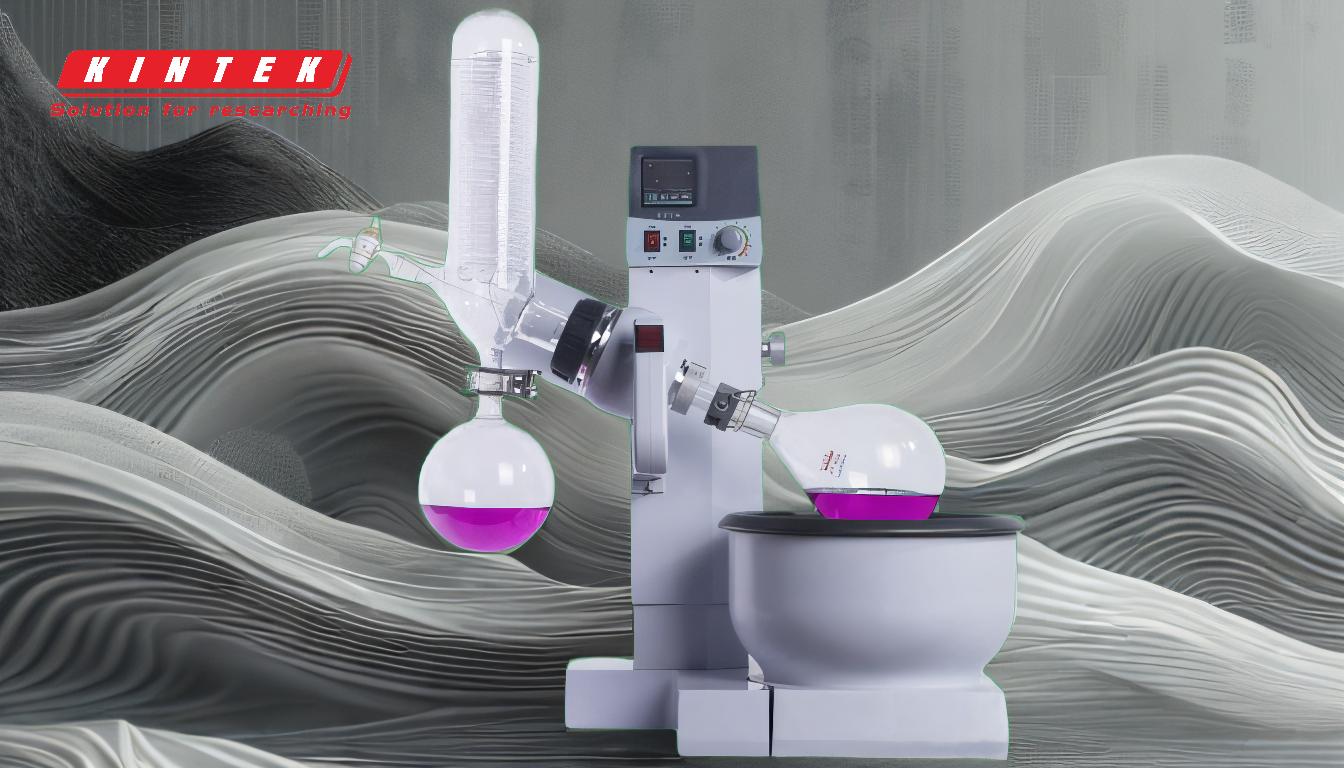Using a rotary evaporator with ethanol involves a series of steps to ensure safe and efficient solvent removal. Key precautions include preventing damage to the vacuum pump, avoiding exposure to toxic volatiles, and ensuring proper handling of rotating parts and air-reactive materials. The process begins with setting up the water bath and condenser, connecting the flask, and applying vacuum pressure. Monitoring the evaporation process is crucial to prevent bumping and ensure complete solvent removal. After evaporation, the system must be depressurized, and the flask removed safely. Proper cleaning and maintenance of the equipment are also essential to ensure longevity and safety.
Key Points Explained:

-
Setting Up the Rotary Evaporator:
- Turn on the water bath and set it to the appropriate temperature for ethanol evaporation.
- Ensure water is flowing into the condenser to facilitate cooling.
- Connect the round-bottom flask containing the ethanol solution to the rotary evaporator, securing it with a clip to prevent detachment during rotation.
-
Applying Vacuum Pressure:
- Turn on the vacuum pump and immediately close the tap to create a reduced pressure environment within the system. This lowers the boiling point of ethanol, allowing it to evaporate at a lower temperature.
- Gradually increase the vacuum strength while monitoring the system to avoid sudden boiling or bumping.
-
Initiating Rotation:
- Start the rotation of the flask at a speed appropriate for the sample volume. A typical rotation speed ranges between 50 to 160 revolutions per minute, depending on the flask size and sample viscosity.
- The rotation creates a thin film of the solution on the inner surface of the flask, increasing the evaporation surface area and speeding up the process.
-
Monitoring the Evaporation Process:
- Lower the flask into the water bath after ensuring the system is stable and no bumping occurs. Bumping can cause the solution to splash into the condenser, leading to contamination.
- Monitor the boiling process closely. If bubbles reach the neck of the flask, re-pressurize the system briefly to prevent overflow.
-
Completing the Evaporation:
- Once all the ethanol has evaporated, raise the flask out of the water bath and stop the rotation.
- Turn off the vacuum pump and carefully open the tap to release the vacuum, returning the system to atmospheric pressure.
- Remove the flask from the rotary evaporator.
-
Post-Process Steps:
- Clean the bump trap and empty the solvent collection flask to prevent mixing of incompatible chemicals in future uses.
- Ensure all switches are turned off and the power plug is unplugged at the end of the session.
- Handle glass components gently, washing and drying them after use to maintain their integrity.
-
Safety Precautions:
- Avoid contact with rotating parts to prevent entanglement of loose clothing, hair, or jewelry, which could lead to injuries.
- Use a bump trap to prevent contamination of the condenser and secure it with a Keck clip or metal clamp.
- Control the rotation speed and vacuum strength to maintain a stable evaporation process.
- Adjust the water bath temperature below the boiling point of ethanol to avoid overheating and potential hazards.
- Collect volatile solvents using liquid nitrogen or dry-ice condensers if necessary.
-
Maintenance and Cleaning:
- Apply vacuum grease to the grinding instrument before installation to ensure a proper seal and prevent leaks.
- Conduct a simulation test before actual use to safeguard the solution and equipment.
- Regularly inspect and maintain the rotary evaporator to ensure its proper functioning and longevity.
By following these steps and precautions, you can safely and effectively use a rotary evaporator with ethanol, ensuring efficient solvent removal while minimizing risks to both the operator and the equipment.
Summary Table:
| Step | Key Actions |
|---|---|
| Setup | Turn on water bath, connect condenser, and secure flask. |
| Vacuum Application | Start vacuum pump, close tap, and monitor for bumping. |
| Rotation | Set rotation speed (50-160 rpm) to create a thin film for faster evaporation. |
| Monitoring | Lower flask into water bath, monitor boiling, and prevent overflow. |
| Completion | Raise flask, stop rotation, and release vacuum safely. |
| Post-Process | Clean bump trap, empty solvent flask, and handle glassware carefully. |
| Safety Precautions | Avoid rotating parts, use bump traps, and control temperature and vacuum. |
| Maintenance | Apply vacuum grease, conduct simulation tests, and inspect equipment regularly. |
Need help with your rotary evaporator setup? Contact our experts today for personalized guidance!










